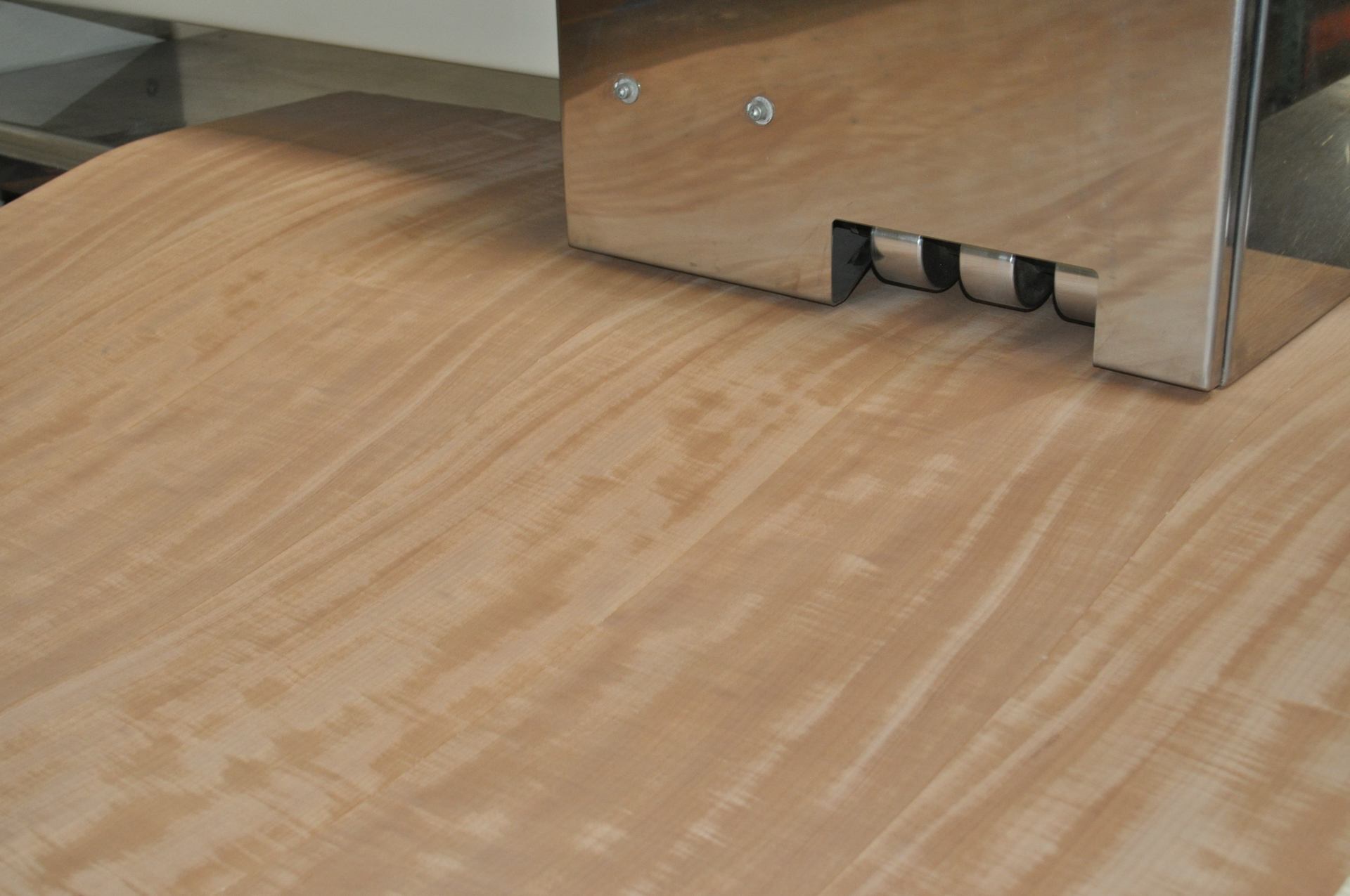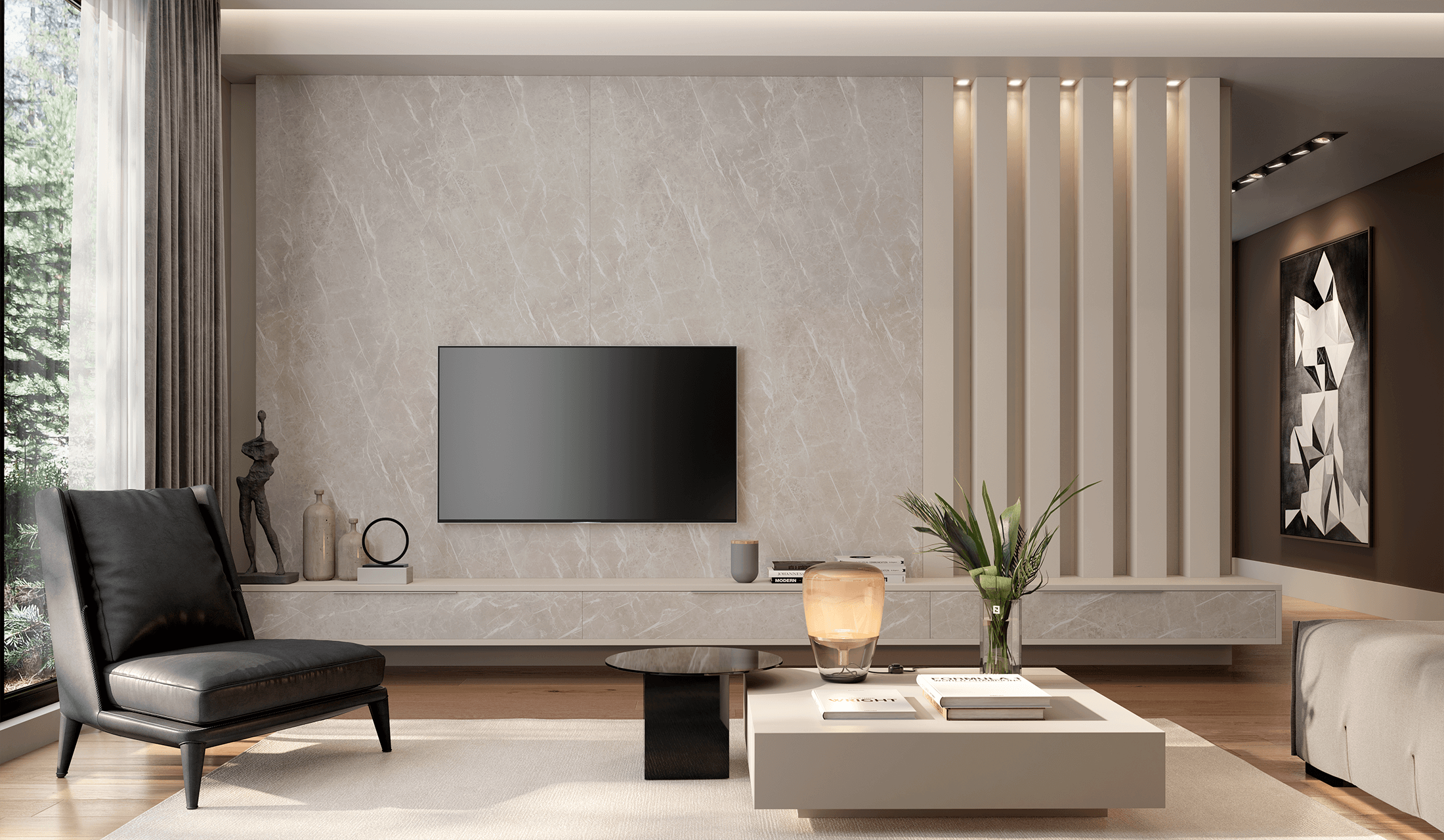
Figure refers to the appearance of texture that is created through the use of wavy, curved, or uneven patterns on veneers. Most of us are familiar with the appearance of wood grain, but you may not know that you can choose from a number of different types of veneer, including textures, or figures.
A quilted figure appears as if logs have been sliced. This three-dimensional looks “bumpy,” and the uneven growth rings of the wood are visible. A ribbon stripe figure has long stripes down the length of the veneer. The stripes alternate between light and dark and may vary slightly in width. The flake figure is cut in a way to enhance the flaky surface coloring. It is achieved through the use of certain species, and has a ridged surface that appears as if it might flake off. The crossfire figure displays a unique array and pattern of marks in the grain of the wood. They may appear as contrasting colors or irregularities in the wood.
The pommele figure is generally found in very large trees. It illuminates patterns of rings, engulfing each other, throughout the surface of the veneer. The burls figure refers to the “eyes” of the wood. These eyes are actually clustered buds, and tight, concentric circles appear around them. The crotch figure is taken from the trunk of the tree where the main branches and trunk conjoin. These figures have thin lines that converge at the middle of the veneer. The mottled figure refers to an irregular or blotchy surface to the veneer. The curly figure, common in maple, appears to undulate in an overlapping fashion. The fiddleback figure comes from logs that have been quarter sawn. The result is long, thin lines across the surface of the veneer. The value increases based on the regularity of the stripes. The bird’s-eye figure is prized for the appearance of numerous eyes in the wood. This in demand figure shows round eyes throughout the wood.
Contact us today and let us know what figure catches your eye.





